Recently, we sat down virtually with Dean Shirley of Echoes of Adventure Podcast to talk about food and water tips for overlanding. That episode will be released soon and we’ll make sure to share the link. But in the meantime, I thought I’d dig into the topic some more, sharing what I’ve learned from personal experience while living out of our Jeep off-grid.
[UPDATE 3/5/21: The episode is live! Listen here.]
Believe me, I still have a lot to learn. “What do you like to cook?” inquired one of my mother-in-law’s friends, right after Eric and I got engaged. As it turns out, spaghetti isn’t a real meal. That lady laughed hard at me and I was so embarrassed. All I could do was sit there, completely bewildered.
Since then, my meal repertoire has expanded. But it’s one thing to cook in a fully-equipped kitchen and another thing to cook in camp, as you rummage around in your vehicle fridge after dark, maybe with some rain and wind lashing at you.
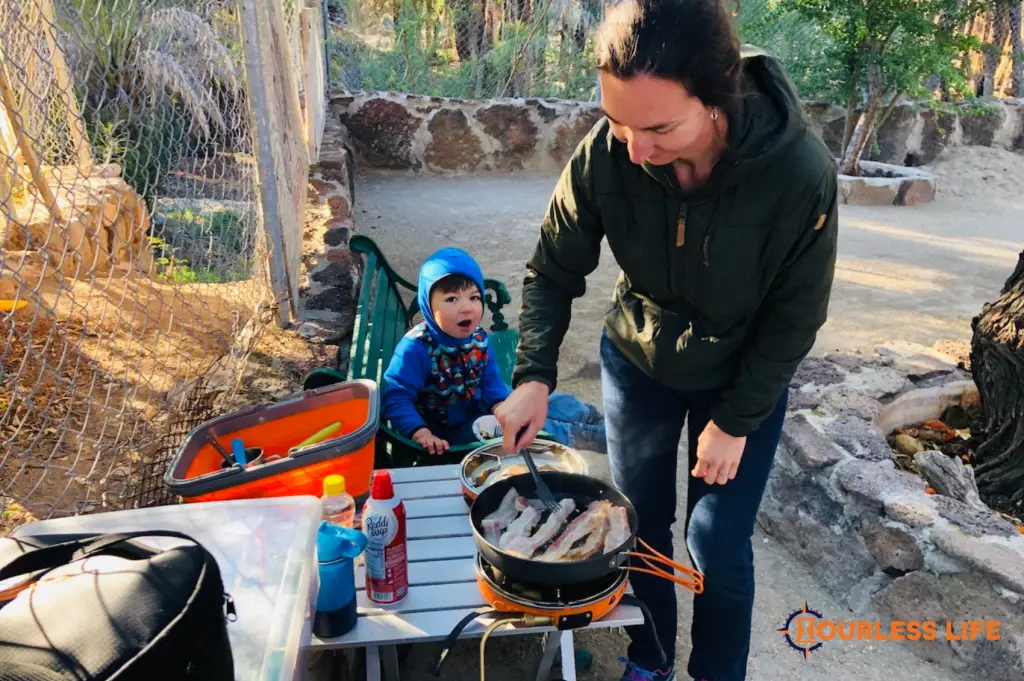
Yes, food and water on the trail can definitely be a source of anxiety. My goal with this article is to empower you to push past your apprehension. Don’t let the uncertainty keep you from Getting Out There.
This article includes affiliate links. If you get excited about any of the products featured on this blog, then we’d love it if you’d shop via our links. This encourages us to continue investing time in creating useful content!
Without further delay, here are my best tips for eating and drinking during an overland trip.
1/ Look for big city grocery stores AND small local markets
I understand feeling uncertain about food when traveling into a new area. I confess I’ve especially worried about finding good meat in parts of the world we’ll be going into.
However, experience has gradually quieted my concerns. Remember, everyone needs food! If you are near other people, wherever you are in the world, then there will be food close by.
The smallest towns in the United States have a grocery store of some kind. But we’ve learned to do big grocery shops in cities. The selection is typically better, food is fresher, and prices are lower. Small town grocery prices can be exorbitant because the stores are trying to recoup high delivery prices.
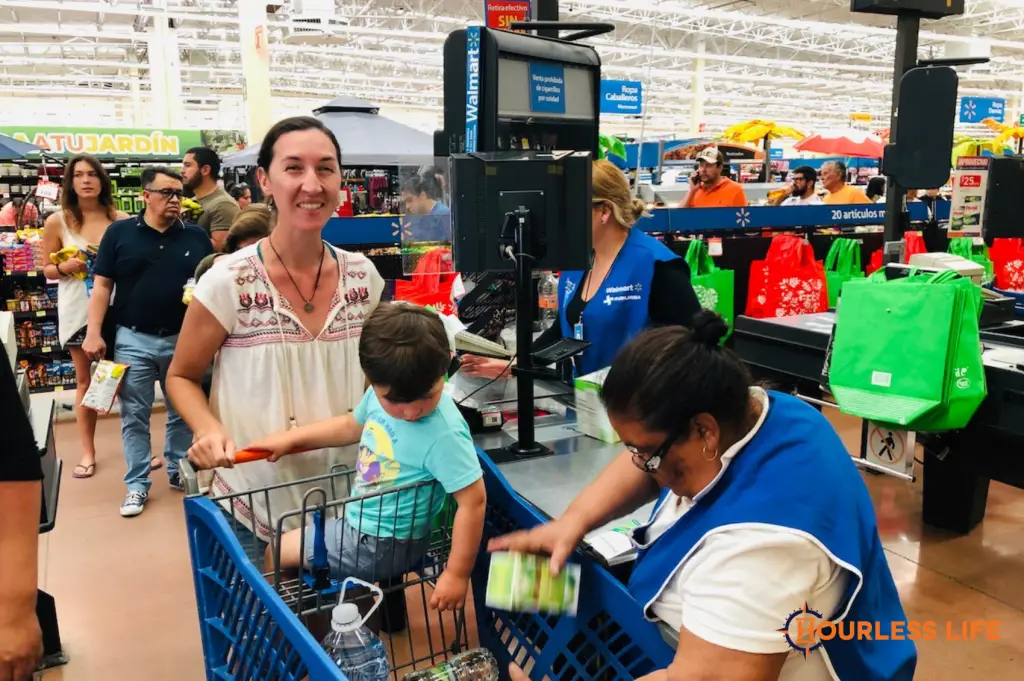
As far as every-day essentials like milk, eggs, and bread, you can typically restock in whatever town you find yourself in. If there’s a gas station, then you will be able to find something to eat.
This is true not only in the United States, but also in Mexico. You wouldn’t believe how gorgeous some of the grocery stores are in Mexican cities.
We like Chedraui when we can find it. It’s a grocery store chain in Mexico, similar in style and cost to your average Safeway. Some large Chedrauis also sell home goods, making them more like Super Walmarts. But any grocery store will do, and we never go hungry! Even the smallest town in Baja, like Bahía de Los Ángeles, had not one but two grocery stores when we were there in 2020.
So that’s grocery stores. But don’t hesitate to tap into local markets whenever you can find them! Markets allow you to find fresh produce and other items, while supporting the locals in your area.
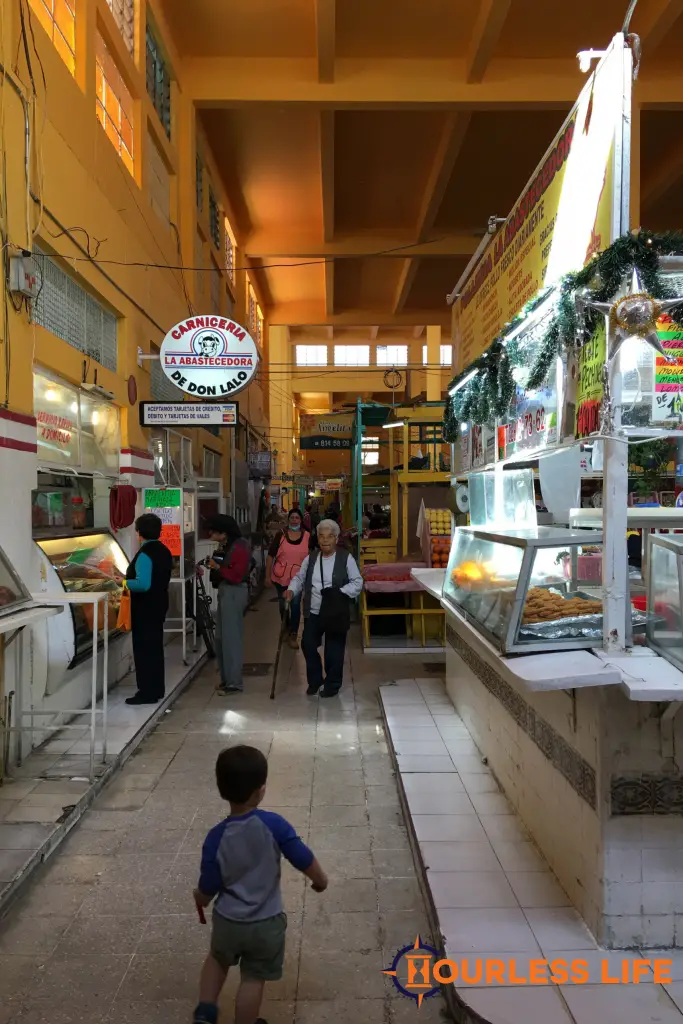
Some of my favorite memories of Mexico are from colorful markets. Even if we don’t really need to buy anything, we love to walk through them whenever we can.
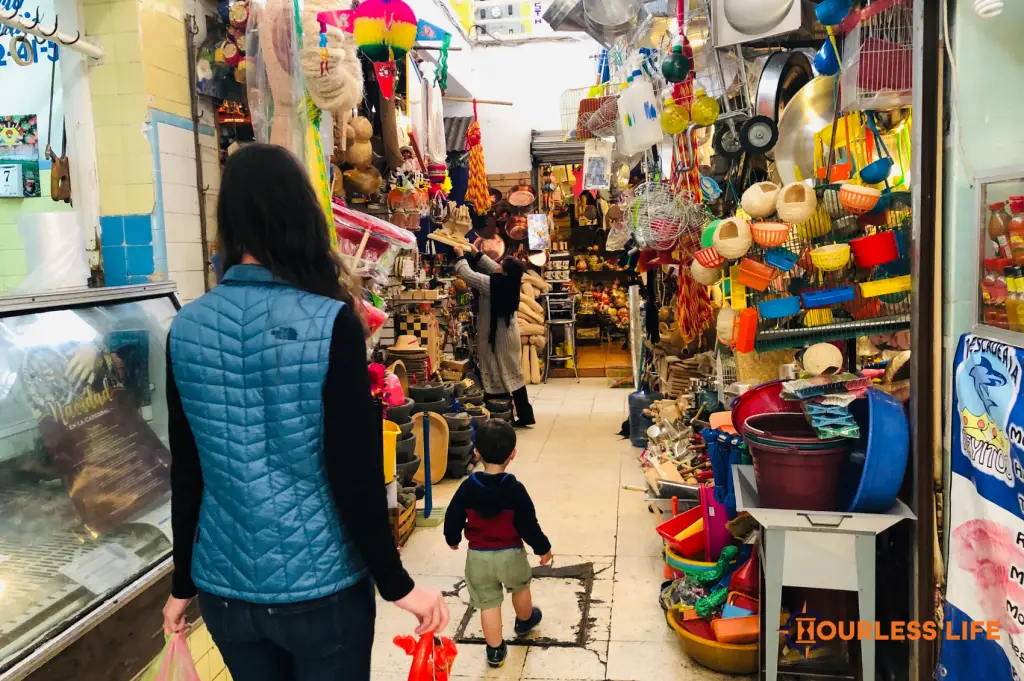
2/ Get creative if you have dietary restrictions
Eric was diagnosed with Type II diabetes in summer 2017. To combat the disease, he decided to try a ketogenic diet. After four months, he had eaten himself out of diabetes and his lab numbers were normal. He no longer has to take any medication for diabetes because he manages it through diet alone.
A keto diet features high fat intake, moderate protein intake, and low carb intake. Though Caspian and I aren’t technically on keto, all of our family meals with Eric are keto, so Eric can maintain his health.
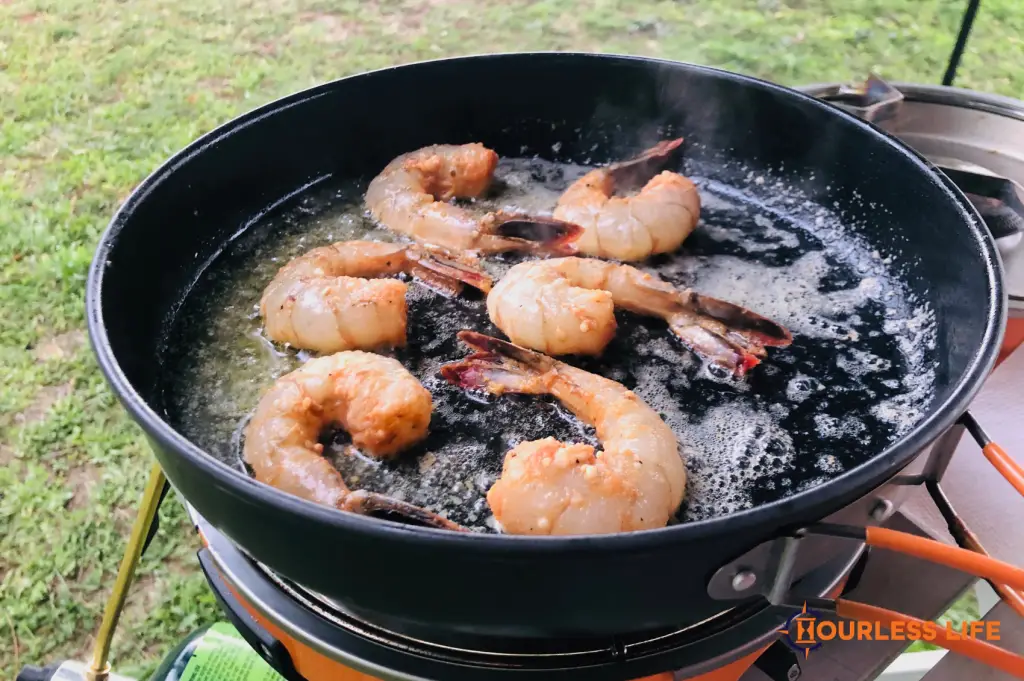
Transitioning to keto was a challenge for me because I had to figure out what it even was, and then do careful meal planning. Fortunately, more than three years later, I instantly know what meals are keto or what modifications can be made to make them so.
…in the United States. But it’s always a challenge when we cross the border into Mexico and don’t have access to all of our staples. We especially miss low-carb tortillas, which I’m hoping will start appearing in Latin American grocery stores before long.
It takes creativity and persistence to handle dietary restrictions while traveling, but it can be done. Keep practicing, and don’t be afraid to ask for substitutions in your food. If you don’t take care of your health, then traveling will not be sustainable.
3/ Use your regular food budget
It’s easy to spend a lot on food while traveling. And if you’re on vacation, then that’s okay!
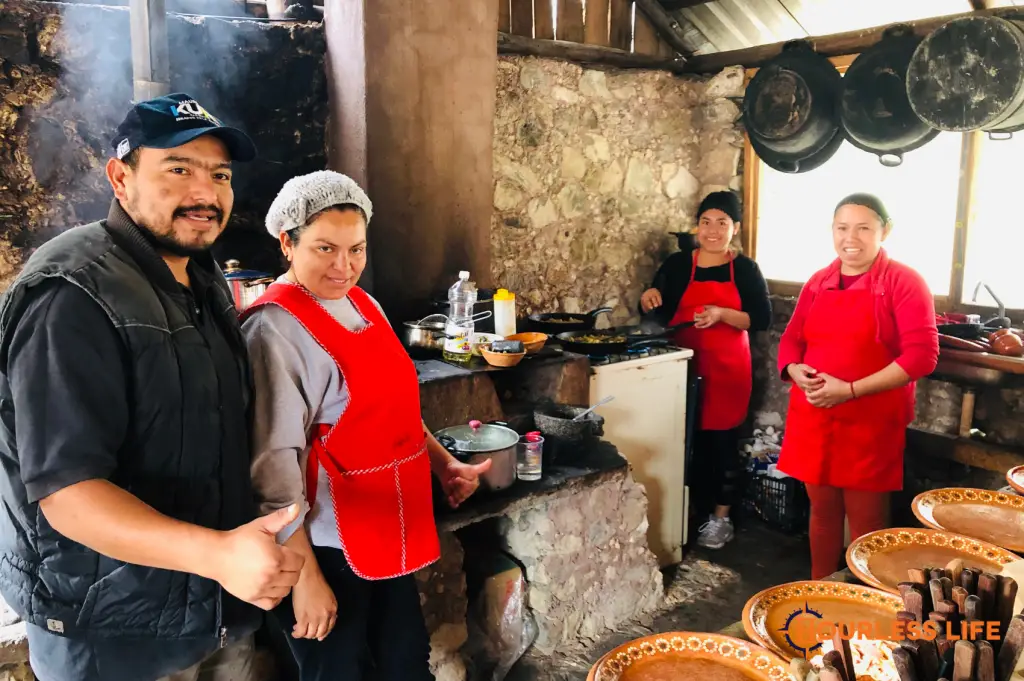
But if you’re concerned about spending during your upcoming trip, then you can just use your regular food budget. Think about it: you won’t be at home spending money on groceries or eating out. So take whatever you would’ve spent at home, and spend it during your trip instead.
The beautiful thing about overlanding is we all travel with a camp kitchen. So unlike hotel stays, when we don’t have a kitchen and have to eat out, we can reduce our meal costs while overlanding by meal planning, grocery shopping, and cooking our meals on the trail.
If you’re curious about our food costs during our 2,000-mile overland trip through mainland Mexico in 2019, then you can read our full spending report.
And as far as water costs, you should know purchasing water bottles and refilling water containers in Mexico is extremely inexpensive. In the United States, if you’re periodically popping into campgrounds for showers and a refresh, then you’ll also be able to refill with water at no extra cost.
4/ Think through ingredients
When we’re on an extended overlanding trip, meal planning is easier because I know I have my full cooking kit with me.
I find it harder when we go out for one week, or a weekend. For these shorter trips, I rigorously plan my meals and detail every little thing I need.
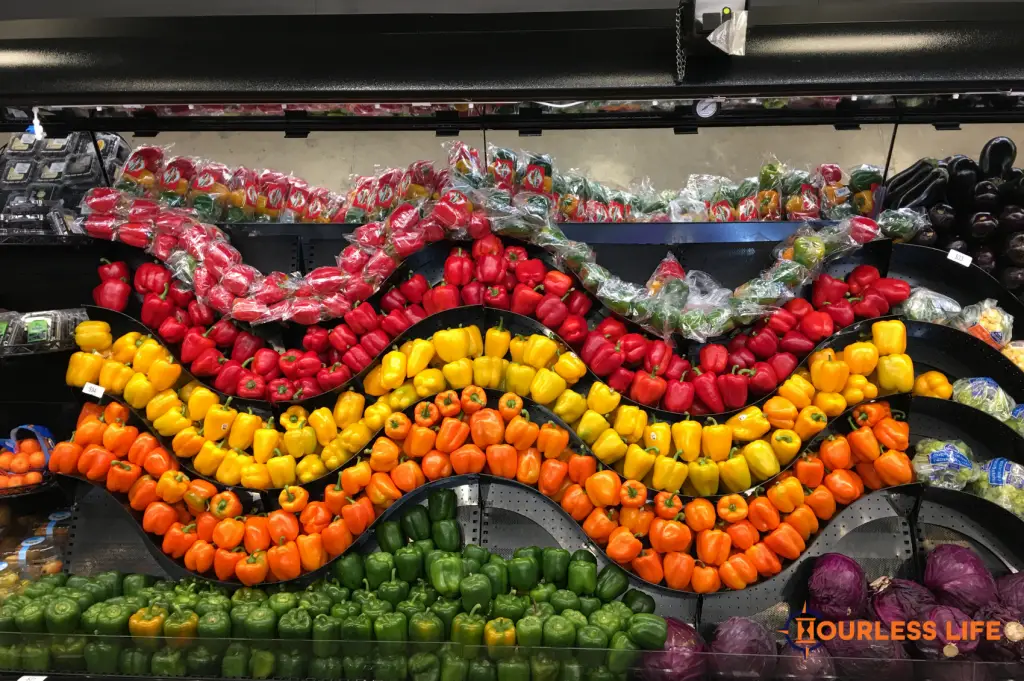
It’s tedious, but worth it. If I don’t plan, then it’s easy to forget something like olive oil, garlic powder, or aluminum foil. I always have these things at home, so I don’t even think about them.
But forget one when I’m out on the trail, and it can be difficult to complete that meal I was so excited about.
5/ Prep in advance
There are a few meal prep things you can do in advance that will make overland meals easier. You can wash all your produce, so you don’t have to use water from your camp containers. If you get really ambitious, you can portion out what you need. For example, don’t take the whole bunch of celery when you only need two stalks. This will make room in your fridge or cooler. You can even chop veggies or other food items to save time.
I like to strike a balance when it comes to food prep. Washing produce ahead of time is always a good idea. But the reality is, when I’m out there, I don’t have a ton to do at meal time besides cook. So I’m not big on chopping or cooking parts of the meal beforehand.
I want to enjoy the process. Whipping up a delicious meal in the middle of nowhere is extremely satisfying.
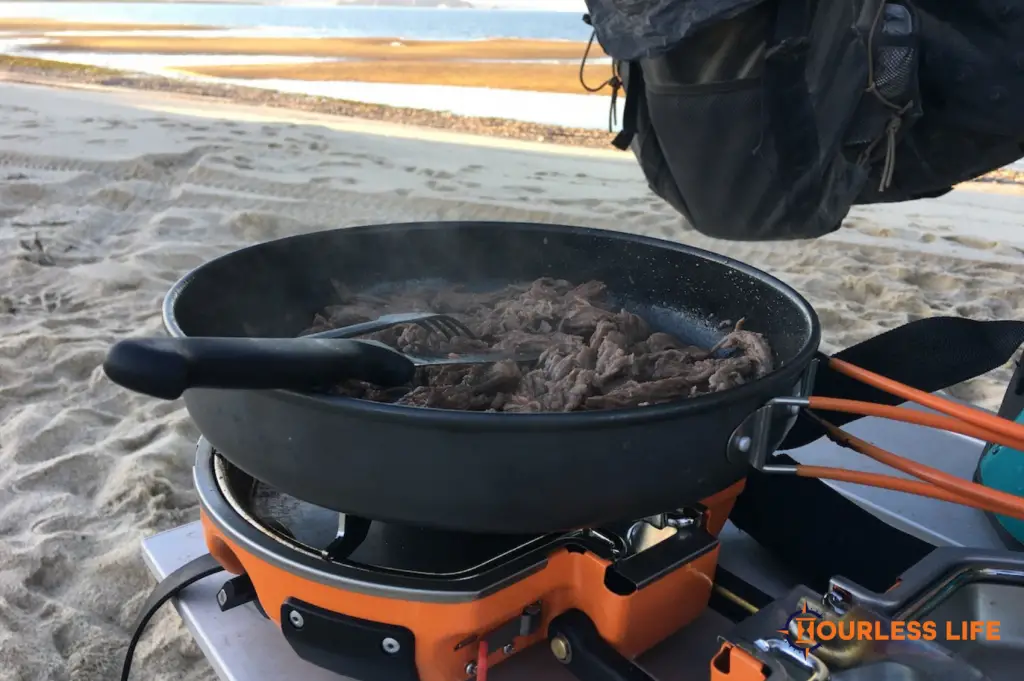
There is one exception to what I just said, though. If I know we’ll be arriving at camp after dark, or if the weather is forecast to be rainy or cold, then I might do extra prep or meal cooking ahead of time. Ashley Giordano does this in Episode 1 of X Overland’s Arctic Solo Series. She knew they’d encounter sub-zero temperatures, so she cooked and froze soups that would be easy to serve in frigid weather conditions.
6/ Don’t buy groceries for the whole trip
You don’t need to buy groceries for your entire overlanding trip. You only need to pack for the days you’re away from services.
This does several things:
- Keeps your packing weight down.
- Avoids food waste.
- Keeps you open to opportunities.
We love to eat out. It’s one of the ways we immerse ourselves in the local culture.
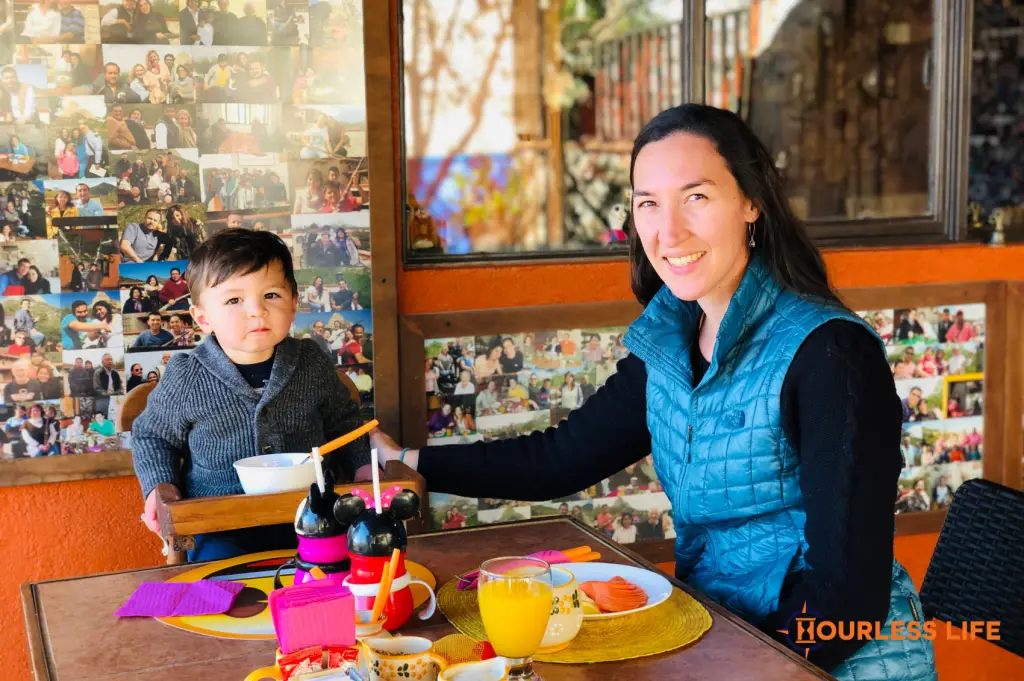
We used to dine out a lot more. But as we’ve gotten closer to our international trip, we’ve needed to relinquish business projects that require constant Internet connection. This has been an intentional choice that’s resulted in a lower income. Eating out is the budget line item we’ve needed to decrease. We still make room for eating out, but we’re much more intentional about where we go.
Eating out south of the U.S. border is a different story. If you go to a casual local spot (as opposed to a fancier sit-down restaurant), then it will cost about the same as groceries would–maybe less. So we eat out a lot in Mexico.

In Puebla, one of Eric’s cousins literally runs a restaurant out of her garage. Talk about a home-cooked meal!
7/ Ease into foreign food
One pro tip for overlanding in Latin America is to take probiotics to fortify your digestive system. We start taking Culturelle about a week before crossing the border, and make sure we have enough to last a couple of weeks in our new country. We were able to find more probiotics at a Walmart in Baja when we ran out.
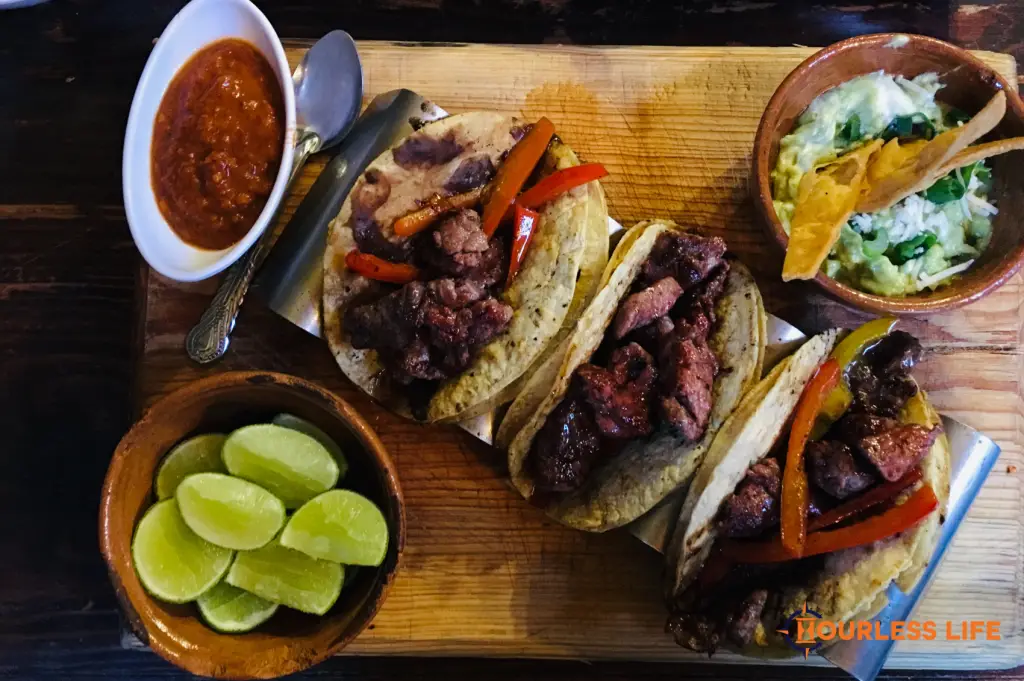
Some people argue how affective probiotics actually are. But we’ve used them every time we’ve visited Mexico, and have had rare and minor gastrointestinal issues. Caspian (who had just turned two when he overlanded 2,000 miles through interior Mexico) hasn’t had any problems at all.
8/ Recognize water myths
Some people are under the impression that drinking Mexico’s water is a terrifying, scary thing, and you’re bound to get sick from it.
But there’s a myth surrounding water in Mexico.
The locals know water out of their taps is not for drinking. Mexico doesn’t have a water treatment system like we do in the U.S. So essentially everyone in Mexico drinks bottled water, and only bottled water is served in restaurants (in our fairly extensive experience).
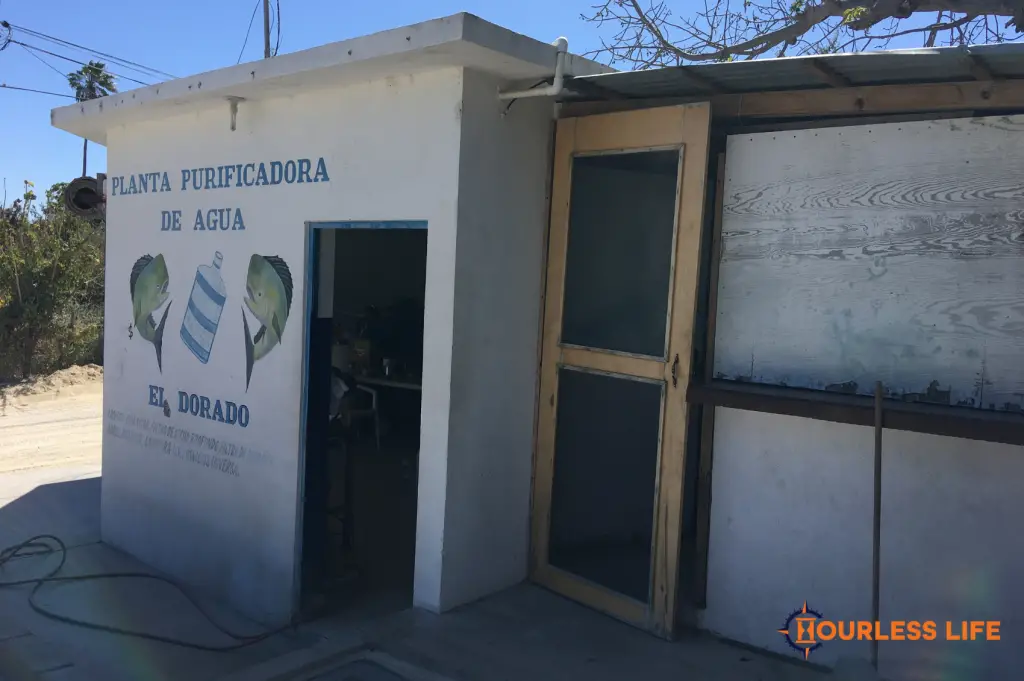
We were so worried about the water when we first visited Mexico by plane in 2016. We thought Mexicans were “used to” drinking their water and our systems weren’t, so they could drink it and we couldn’t. Now that we’re a tad more educated, water in Mexico isn’t something we worry about anymore!
9/ Be realistic about water use
You may remember from our article about survival basics that you need 3/4 (three quarters) of a gallon of drinking water for each person in your party, per day. That is just for drinking.
In addition to personal Hydroflasks, we’ve been using two Rotopax containers for water through mainland Mexico and Baja. The containers hold a combined total of 4.5 gallons.
That may seem like an insanely small amount of water for all your camp needs, but conserving water comes with practice.
We started learning in 2018 when we began extensive dry camping in our RV. In Mexico, we’ve never, ever had trouble finding water. Remember, the locals are not drinking tap water, but bottled water. So you will find bottled water in every little town, at every little gas station.
Neither drinking nor doing dishes requires a ton of water. It’s when you add a shower setup that water can go really quickly.
So let’s talk about overland showers.
We don’t have a shower system in our Jeep Wrangler, and we don’t plan to have one in our Jeep Gladiator. Reasons:
- Water weighs a lot. In my personal opinion, carrying extra water for showering is a poor use of extremely limited payload capacity.
- Showering out in the open can be a cold, unpleasant experience.
- Wet wipes work. They aren’t the same as a shower, but high-quality ones can get you through a few days. (We’ve been sponsored by Venture Wipes in the past and love their product.)
- In Mexico, shower options seem to be everywhere. Even a restaurant we stayed at had a shower. Heck, I took more showers in Baja then I did in the states when we had our RV shower.
If you have an overland shower, then I won’t judge you. I just ask that you’re honest with yourself about how much water you can safely carry without exceeding your vehicle’s payload. And also consider where you’re placing a heavy aftermarket water tank, and how it impacts the geometry of your vehicle. (We want to keep weight as low and centered as we can.)
I mentioned how we’ve been using two Rotopax for water. They’re going to stay in the states with our North American build. We’re switching to a Lifesaver for our global trip, which holds almost five gallons of water, and filters out bacteria and viruses.
With it, we can fill from any source, even a muddy pond. We don’t expect to get that desperate really ever, but it’s nice to know we have options!
10/ Learn as you go
I’ve listened to several overlanders who have traveled more than us, and the bottom line is: we’ll all figure it out! With anything as essential as food and water, which everyone around you also needs, you will undoubtedly learn what you need to know. Don’t let something like food stop you from an adventure!
-B

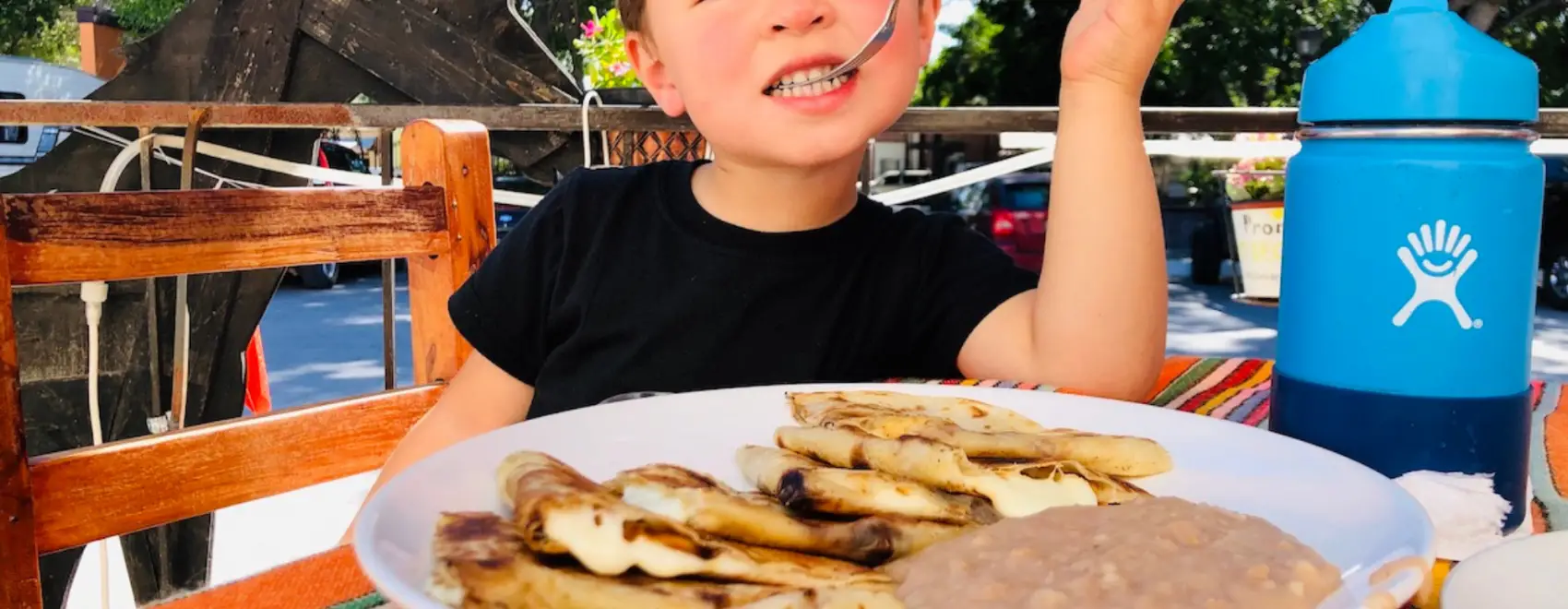
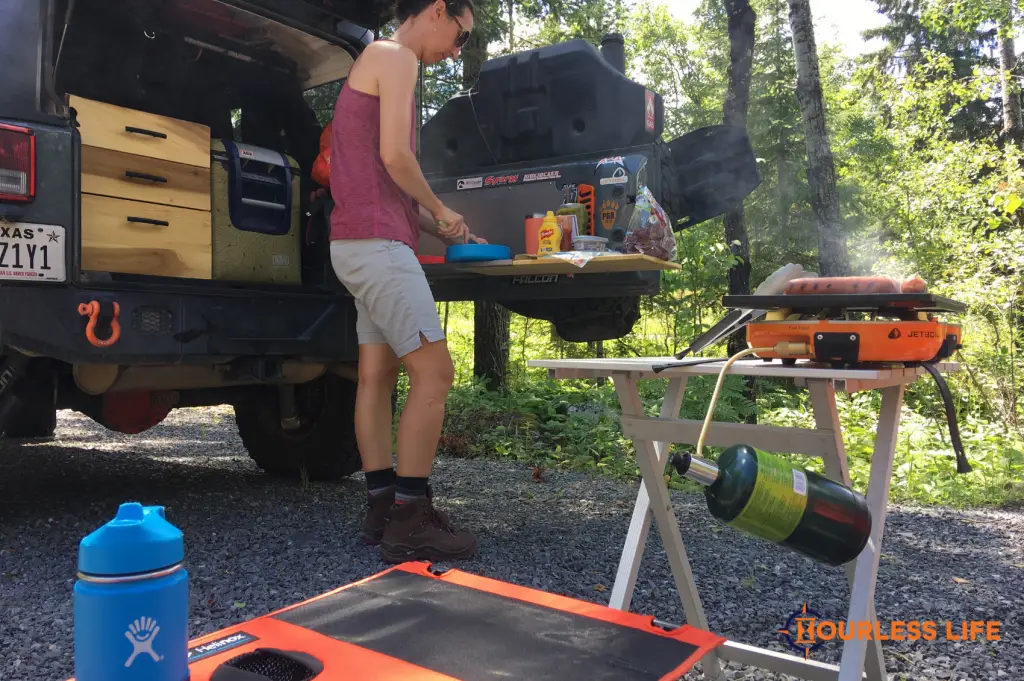
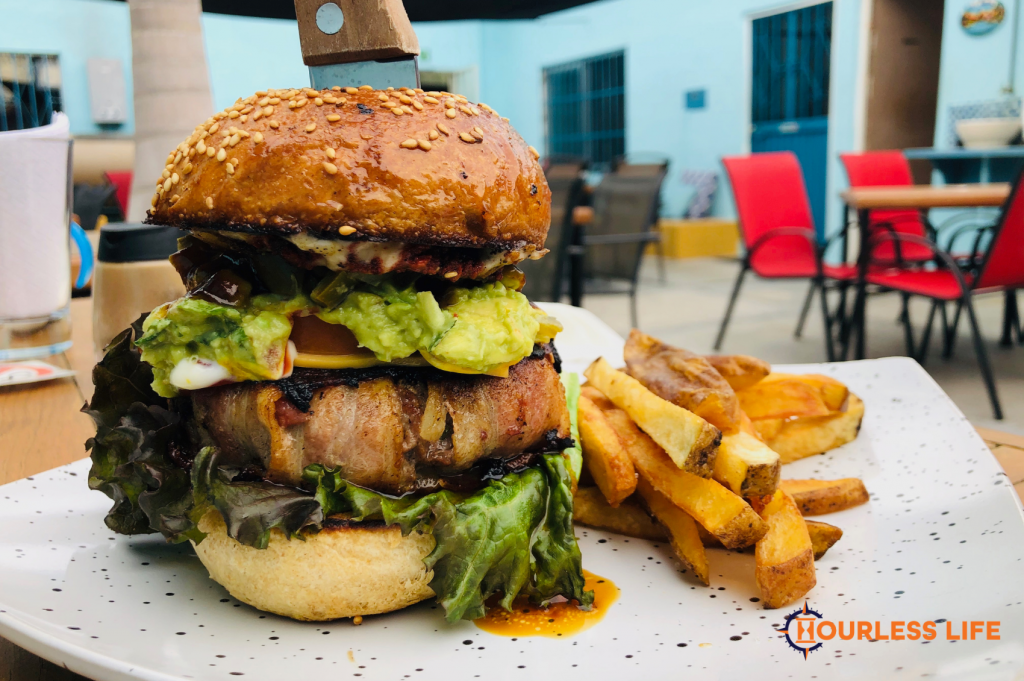
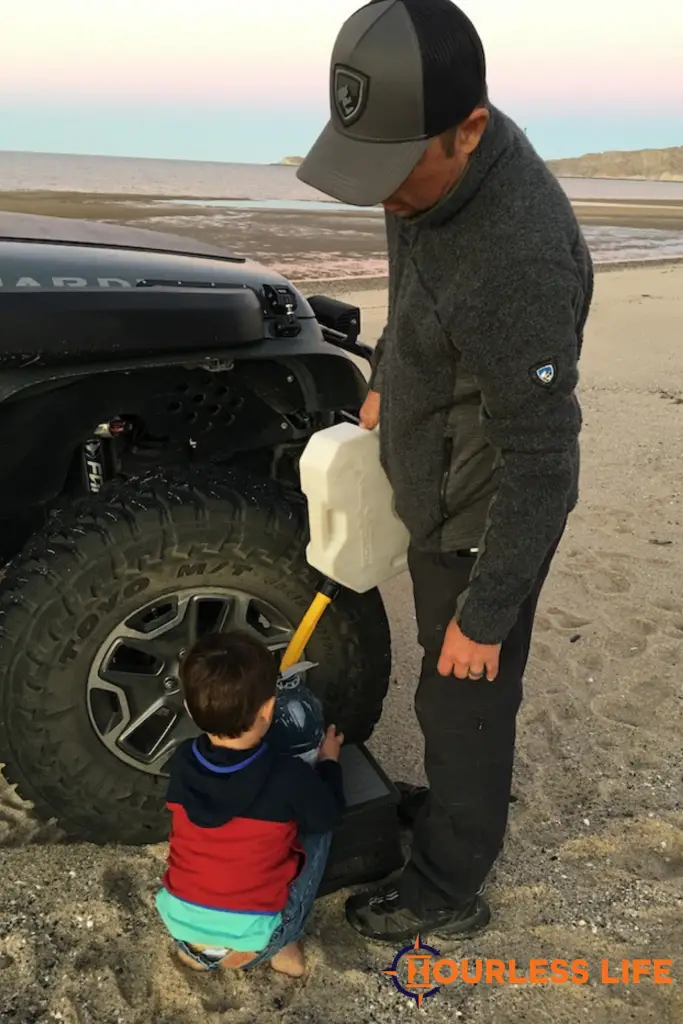
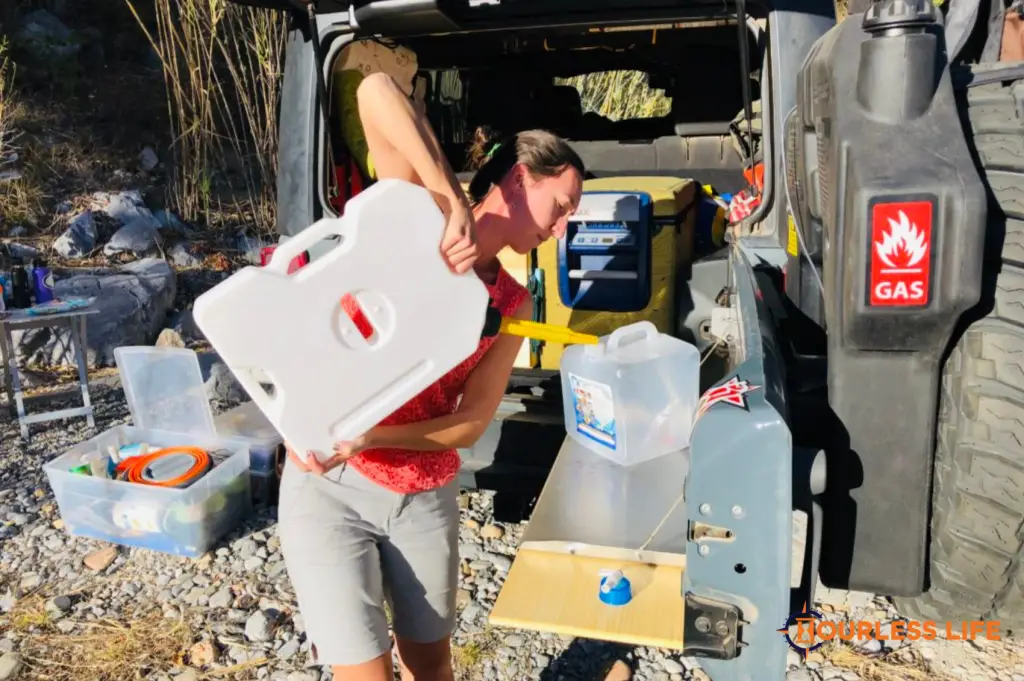
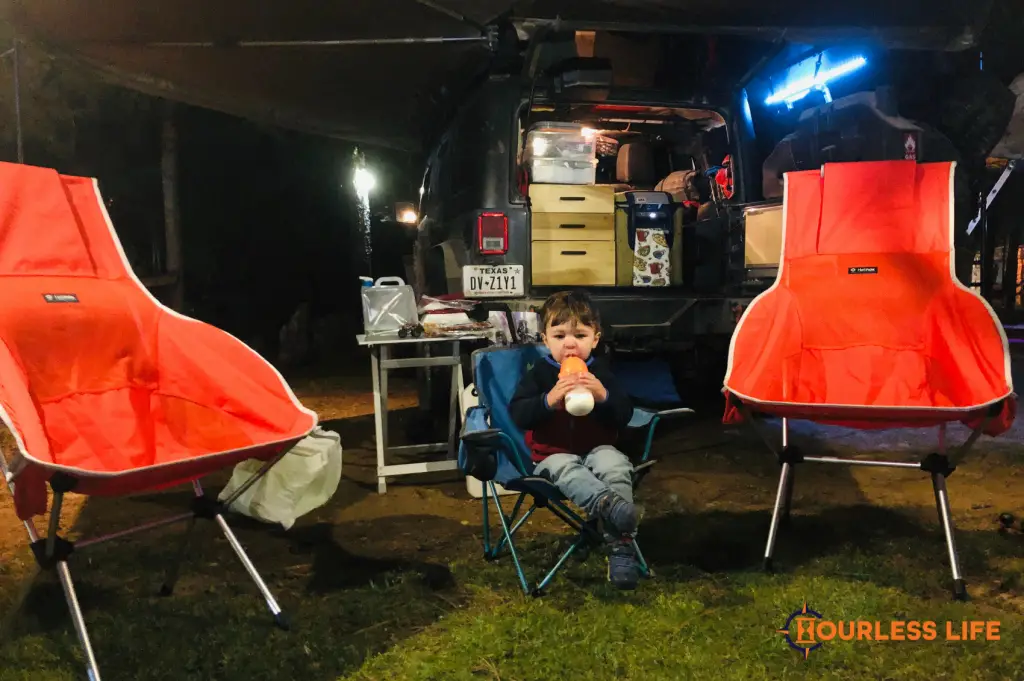

This was fascinating to read and think about. Thank you for the transparency.
I’m glad you found it useful, Amy! Thanks for taking the time to comment.
Great stuff Brittany! Plenty to worry about, this doesn’t need to be the big item that holds anyone back. 🙂
Right?! We definitely need to harness our mental energy to its best use. 😉